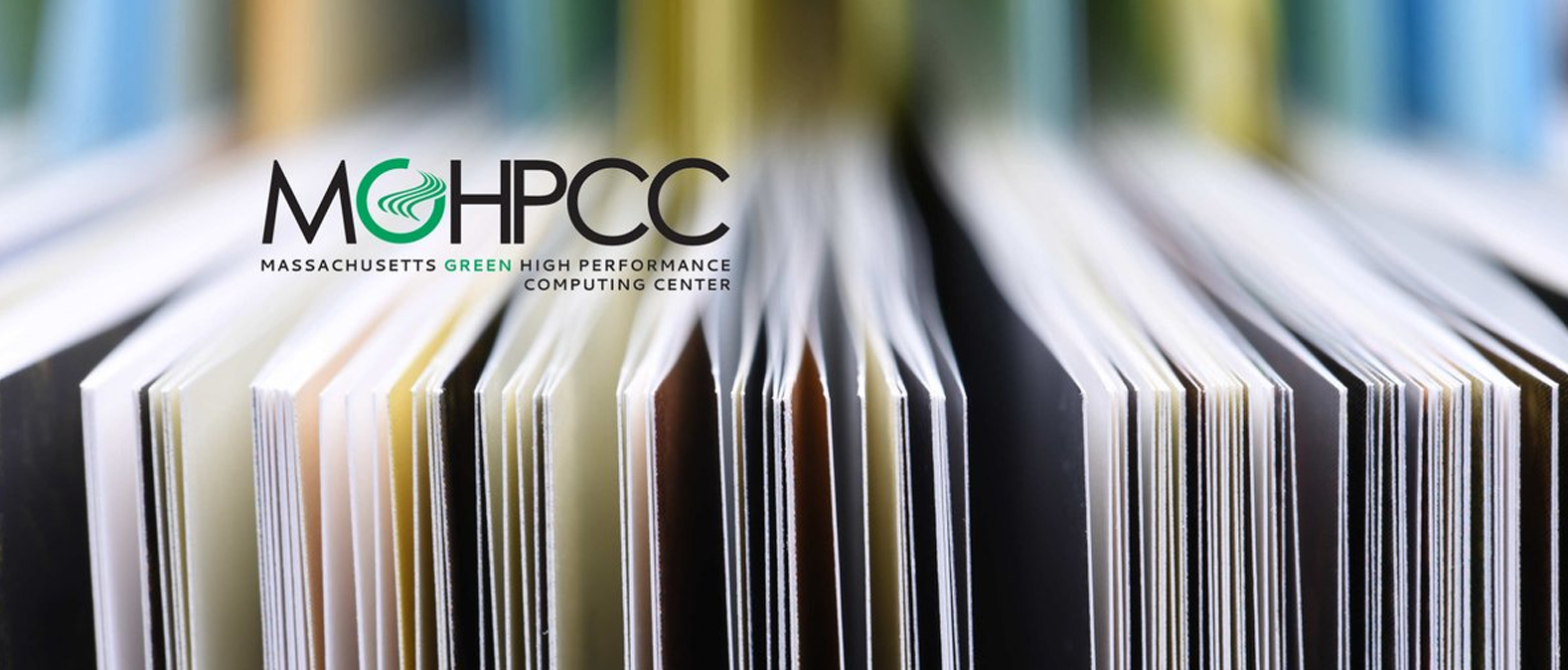
Conditional Generative Modeling? Cyclotron Radiation Emission Spectroscopy? Stressed Polycrystalline Thin Films? This month's selection of publications featuring research using the MGHPCC.
I. Abramovic et al (2022), Data-driven model discovery for plasma turbulence modelling, J. Plasma. Phys., doi: 10.1017/S0022377822001192
Anurag Ajay et al (2022), Is Conditional Generative Modeling all you Need for Decision-making? arXiv:2211.15657 [cs.LG]
Cooper Cone et al (2022), Reward Function Optimization of a Deep Reinforcement Learning Collision Avoidance System, arXiv: 2212.00855 [cs.AI]
Amaya Daigavane et al (2022), Learning Integrable Dynamics with Action-Angle Networks, arXiv: 2211.15338 [cs.LG]
Matthew H. Doran et al (2022), Myosin loop-4 is critical for optimal tropomyosin repositioning on actin during muscle activation and relaxation, Journal of General Physiology, doi: 10.1085/jgp.202213274
Chenru Duan et al (2022), Active Learning Exploration of Transition-Metal Complexes to Discover Method-Insensitive and Synthetically Accessible Chromophores, Journal of the American Chemical Society, doi: 10.1021/jacsau.2c00547
A. Ashtari Esfahani et al (2022), Tritium Beta Spectrum and Neutrino Mass Limit from Cyclotron Radiation Emission Spectroscopy, arXiv: 2212.05048 [nucl-ex]
Cecilia Garraffo et al (2022), Revisiting the space weather environment of Proxima Centauri b, arXiv: 2211.15697 [astro-ph.SR]
Andre Grossi e Fonseca et al (2022), Quasicrystalline Weyl points and dense Fermi–Bragg arcs, arXix: 2211.14299 [cond-mat.mes-hall]
Dominick P. Guida et al (2022), Discharge intermittency considerably changes ZnO spatial distribution in porous Zn anodes, Journal of Power Sources, doi: 10.1016/j.jpowsour.2022.232460
Iksung Kang et al (2022), Attentional Ptycho-Tomography (APT) for three-dimensional nanoscale X-ray imaging with minimal data acquisition and computation time, arXiv: 2212.00014 [eess.IV]
Samuel Kim et al (2022), Automated Discovery and Optimization of 3D Topological Photonic Crystals, arXiv: 2211.16560 [physics.optics]
Shelley L. Kuth et al (2022), The Multi-Tier Assistance, Training, and Computational Help (MATCH) Project, a Track 2 NSF ACCESS Initiative, Journal of Computational Science Education, doi: 10.22369/issn.2153-4136/13/2/4
Christopher M. Lemon et al (2022), Solvent-Induced Spin-State Change in Copper Corroles, Inorganic Chemistry, doi: 10.1021/acs.inorgchem.2c02678
Christopher M. Lemon et al (2022), Ag(III)···Ag(III) Argentophilic Interaction in a Cofacial Corrole Dyad, Inorganic Chemistry, doi: 10.1021/acs.inorgchem.2c02285
Soon Wei Daniel Lim et al (2022), Point singularity array with metasurfaces, arXiv: 2211.15012
Y. Ling et al (2022), Wall-modeled large-eddy simulation based on building-block flows, arXiv: 2212.05120 [physics.flu-dyn]
Runze Liu et al (2022), Experimental and Computational Evaluation of Self-Assembled Morphologies in Diblock Janus Bottlebrush Copolymers, Nano Letters, doi: 10.1021/acs.nanolett.2c03927
Neha Makhija and Wolfgang Gatterbauer (2022), A Unified Approach for Resilience and Causal Responsibility with Integer Linear Programming (ILP) and LP Relaxations, arXiv: 2212.08898 [cs.DB]
Gabriel B. Margolis and Pulkit Agrawal (2022), Walk These Ways: Tuning Robot Control for Generalization with Multiplicity of Behavior, arXiv: 2212.03238 [cs.RO]
A. Matthews et al (2022), Deep Electric Field Predictions by Drift-Reduced Braginskii Theory with Plasma-Neutral Interactions Based on Experimental Images of Boundary Turbulence, Physical Review Letters, doi: 10.1103/PhysRevLett.129.235002
A. F. da Mota and H. Mosallaei (2022), Enhanced quantum efficiency and Purcell factor of incoherent light-emitting source modulators coupled with nanoantennas: DDA modeling and optimization, Journal of the Optical Society of America B, doi: 10.1364/JOSAB.476746
Marku Nyevel R. Perez et al (2022), Quantum spin Hall insulating phase and van Hove singularities in Zintl single-quintuple-layer AM2X2 (A=Ca, Sr, or Ba; M=Zn or Cd; X=Sb or Bi) family, Applied Physics Reviews, doi: 10.1063/5.0071687
Carlo Rizza et al (2022), Extreme Optical Anisotropy in the Type-II Dirac Semimetal NiTe2 for Applications to Nanophotonics, ACS Applied Nano Materials, doi: 10.1021/acsanm.2c04340
Andrew K. Saydjari et al (2022), Measuring the 8621 ˚A Diffuse Interstellar Band in Gaia DR3 RVS Spectra: Obtaining a Clean Catalog by Marginalizing over Stellar Types, arXiv: 2212.03879 [astro-ph.GA]
Thijs Stuyver et al (2022), Reaction profiles for quantum chemistry-computed [3 + 2] cycloaddition reactions, arXiv: 2212.06014 [physics.chem-ph]
Thijs Stuyver et al (2022), Machine learning-guided computational screening of new bio-orthogonal click reactions, arXiv: 2212.07621 [physics.chem-ph]
Long hin Tang et al (2022), Integrability and quench dynamics in the spin-1 central spin XX model, arXiv: 2212.04477 [cond-mat.str-el]
Mengyuan Wang et al (2022), Emergent grain boundary phases in stressed polycrystalline thin films, arXiv: 2212.06789 [cond-mat.mtr]
Kyoungwan Woo and Achyuta Rajaram (2022), FREDSR: Fourier Residual Efficient Diffusive GAN for Fast Single Image Super Resolution, arXiv: 2211.16678
Zhang Q. et al (2022), Agent-based modeling of the effects of conservation policies on social-ecological feedbacks between cropland abandonment and labor migration, Landscape Ecology, doi: 10.1007/s10980-022-01575-w
Yilin Zhu et al (2022), Design of ultracompact broadband focusing spectrometers based on diffractive optical networks, Optics Letters, doi: 10.1364/OL.475375
Do you have news about research using computing resources at the MGHPCC? If you have an interesting project that you want to tell people about or a paper you would like listed, contact